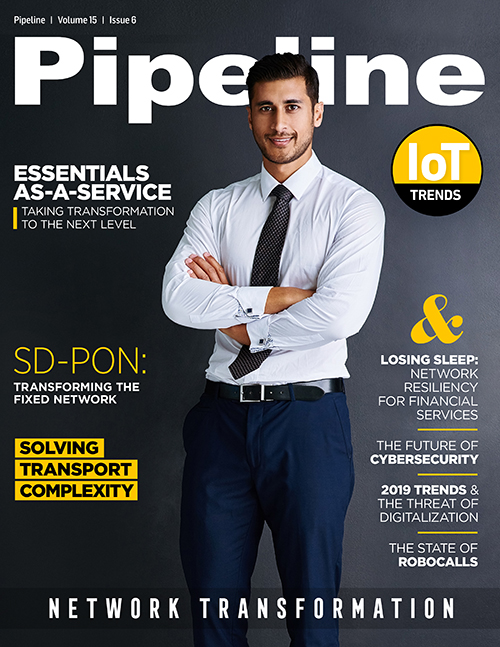The State of Robocalls And What's Next For Carriers
Despite these measures, the lists have been ineffective. Consequently, a market has developed for products that allow consumers to block robocalls. Most products use methods like those used to mitigate SPIT (spam over Internet telephony) and can be broadly categorized by the primary method used. Due to the complexity of the problem, however, no single method is sufficiently reliable.
Industry Solutions
to Combat Robocalling
High risk (scam/fraudulent) and nuisance robocalls are up 15 percent in the first eight months of 2018, according to the TNS report. Carriers must evaluate industry solutions to combat robocalling, as well as how they fit into industry frameworks such as STIR/SHAKEN and policy initiatives at the federal and state level.
Hardware and Software
Many robocall solutions are limited to either utilizing hardware or software, such as traditional copper landlines, or mobile phone contracts from a specific mobile phone operator, which limits the scope of effectiveness. Additionally, most over-the-top (OTT) software solutions aren’t integrated with a carrier network. Therefore, they can only rely on the use of honeypots, blacklists and whitelists.
Blacklists and Whitelists
Many mobile apps prevent robocalls with a user-generated blacklist, but a major issue of these lists is the growing practice of caller ID spoofing. The low barrier to entry in the VoIP services market makes this tactic less and less effective over time.
Landline Call Blockers
Several physical products have been developed for use with landlines, which are typically installed in-home and employ a hard-coded or irregularly updated blacklist. Newer devices for landlines can use cloud-based data to resolve the hard-coded blacklist issues and allow you to create your own whitelist/blacklist.
Crowdsourcing
Robocall user feedback has nearly doubled. Growing consumer frustration with robocalls has translated into users more proactively providing crowdsourced feedback to carriers. According to the TNS study, subscribers report 57 percent of robocalls as spam, 22 percent as scam-fraud, 14 percent as telemarketers, and 7 percent as other.
Using crowdsourcing feedback allows the analytics provider to fine-tune algorithms and layer in context. Supplementing the unstructured data provided by the machine learning methods, crowdsourced data enables the analytics layer to provide information at a more granular level, such as whether a telephone number is being used as a claim to offer free cruises or is a legitimate call from a bank with a fraud alert related to a credit card.
Access to customer contacts, however, can be problematic. Many OTT software solutions require users to provide access to their personal whitelist of genuine contacts in exchange for access to the larger database. For their part, carriers can leverage industry-leading solutions that allow end users to provide direct feedback on robocalls, including the ability to classify robocall by type (spam, scam/fraud, telemarketer, etc.).
Do Not Originate
Do-Not-Originate (DNO) involves the management of an outbound-calling blacklist consisting of telephone numbers that should never originate phone calls, such as government agencies, financial institutions and the 911 Do Not Call list. While implementation of DNO is straightforward from a technical perspective, the challenges lie in the creation, maintenance, and security of the list server. Once established, future additions to the list will have to be authenticated, and similar telephone numbers will not be included in the database. This omission poses the risk of it being used for fraudulent purposes.



















